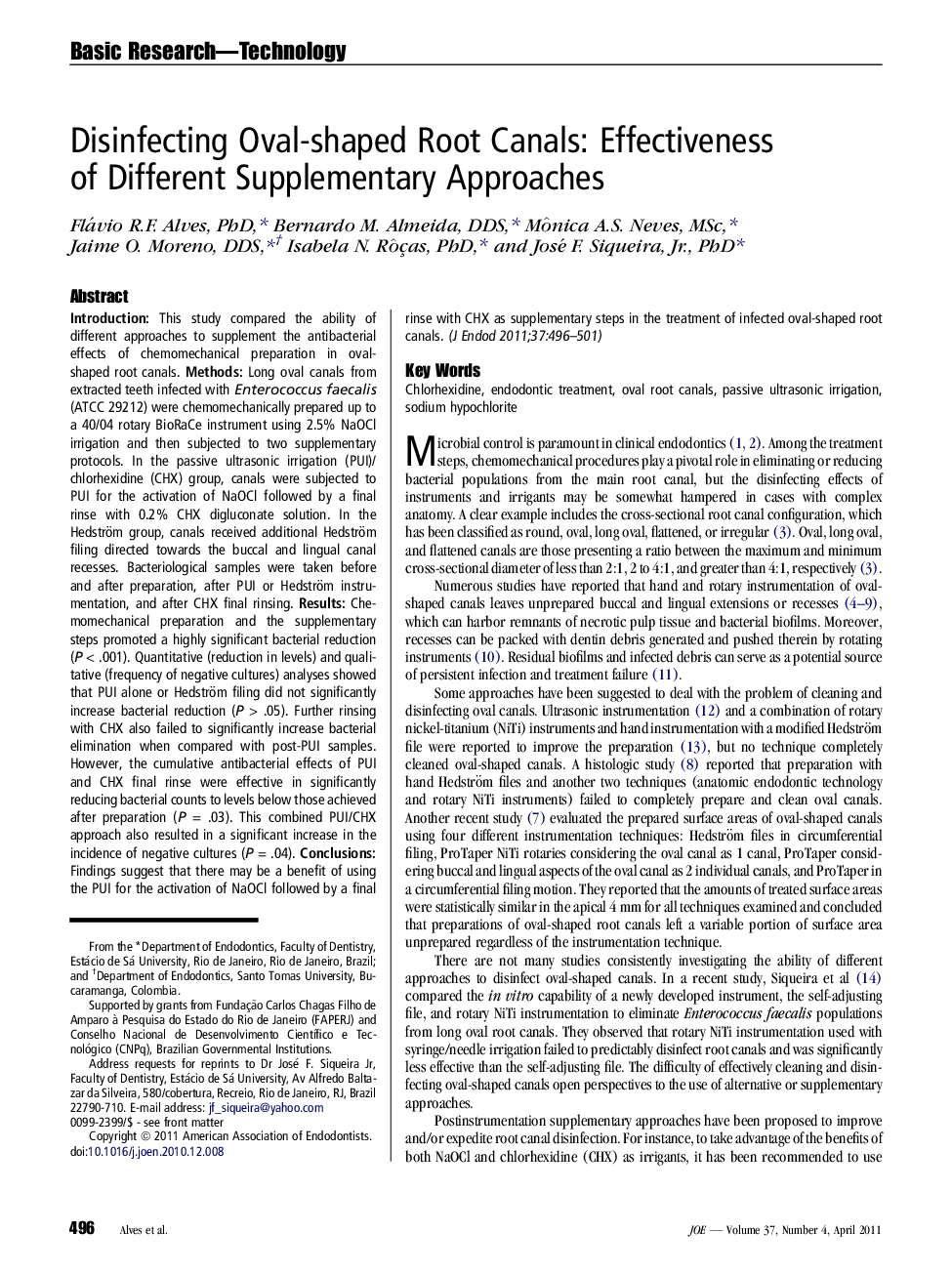| Article ID | Journal | Published Year | Pages | File Type |
|---|---|---|---|---|
| 6053931 | Journal of Endodontics | 2011 | 6 Pages |
IntroductionThis study compared the ability of different approaches to supplement the antibacterial effects of chemomechanical preparation in oval-shaped root canals.MethodsLong oval canals from extracted teeth infected with Enterococcus faecalis (ATCC 29212) were chemomechanically prepared up to a 40/04 rotary BioRaCe instrument using 2.5% NaOCl irrigation and then subjected to two supplementary protocols. In the passive ultrasonic irrigation (PUI)/chlorhexidine (CHX) group, canals were subjected to PUI for the activation of NaOCl followed by a final rinse with 0.2% CHX digluconate solution. In the Hedström group, canals received additional Hedström filing directed towards the buccal and lingual canal recesses. Bacteriological samples were taken before and after preparation, after PUI or Hedström instrumentation, and after CHX final rinsing.ResultsChemomechanical preparation and the supplementary steps promoted a highly significant bacterial reduction (P < .001). Quantitative (reduction in levels) and qualitative (frequency of negative cultures) analyses showed that PUI alone or Hedström filing did not significantly increase bacterial reduction (P > .05). Further rinsing with CHX also failed to significantly increase bacterial elimination when compared with post-PUI samples. However, the cumulative antibacterial effects of PUI and CHX final rinse were effective in significantly reducing bacterial counts to levels below those achieved after preparation (P = .03). This combined PUI/CHX approach also resulted in a significant increase in the incidence of negative cultures (P = .04).ConclusionsFindings suggest that there may be a benefit of using the PUI for the activation of NaOCl followed by a final rinse with CHX as supplementary steps in the treatment of infected oval-shaped root canals.
